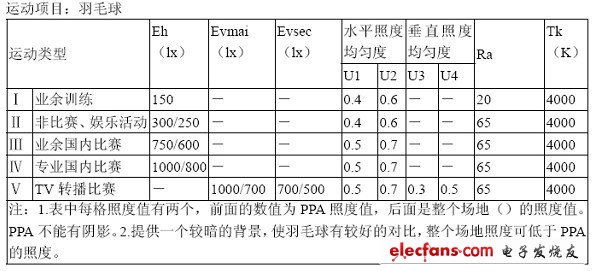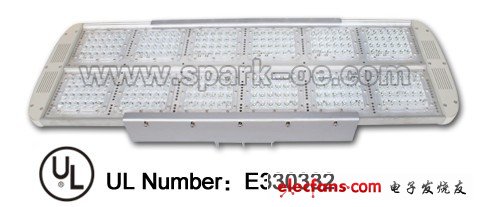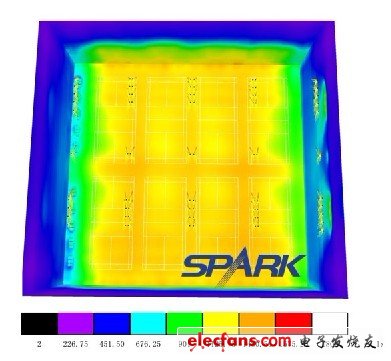Regarding the design of the indoor badminton court lighting scheme, we can consider the following five aspects:
First, badminton venue standards
The badminton court is a length of 13.40 meters, a doubles width of 6.10 meters, a singles width of 5.18 meters, a doubles court diagonal length of 14.723 meters, and a singles stadium diagonal length of 14.366 meters. The center of the site is divided by the net (the height of the columns on both sides is 1.55 meters and the height of the intermediate net is 1.524 meters).
The horizontal direction of the badminton court is divided into two left and a half areas by the middle line; the vertical direction is divided into the front field, the middle field and the back field. The frontcourt is a field from the front tee line to the net; the backcourt refers to a field between the end line and the double-playing tee line; the midfield is a field between the front tee line and the double-player tee line.
According to the international competition regulations, the space above the stadium is at least 9 meters. Within this height, there must be no beams or other obstacles. There must be no obstacles within 2 meters of the course. There should be at least 2 meters between any two courses that are juxtaposed.
Second, badminton court lighting features
There are usually three forms of lighting in a badminton hall: natural lighting, artificial lighting, and hybrid lighting that are used together. Most of the modern badminton courts are mixed lighting, and the artificial lighting of the badminton court is general lighting. In the design of the badminton hall, to make the athlete accurately judge the ball path, height and drop point, the first is to make the best use of natural light, the effect of natural light is the best, of course, to prevent glare, not to allow excessive light or Reflected into the eye. The second is to increase the stability of the illumination and the uniformity and coordination of the distribution. This is not only important for athletes to achieve excellent results, but also for the accurate judgment of the referee and the appreciation of the audience.
Third, the influencing factors of badminton court lighting quality
1) Illumination level: Whether the illuminance meets the standard.
Generally speaking, the vertical illuminance should be greater than 1/2 of the horizontal illuminance. When the vertical illuminance is equal to the horizontal illuminance, the moving environment is optimal. The badminton court illumination requirements are as follows:

2) Uniformity of illumination: Whether the illumination of the sports ground is uniform.
The uniformity of illumination is used to measure the visual conditions within the venue. Uniformity means that the venue should be able to be evenly illuminated, and there should be no areas that are too bright or too dark to provide good visibility for athletes, spectators, and referees. For example, for TV broadcast, when the camera captures the panorama of the game area, the illuminance cannot be greatly changed, otherwise the camera will be exposed.
3) Glare: Whether the glare is obvious.
Glare is another important factor in evaluating the quality of lighting. The generation of glare is related to the installation method of the luminaire, the installation height, the number of luminaires and the installation density, and the light distribution of the luminaire.
When there is too high brightness contrast in the field of view, people will feel glare and affect people's visibility. If you look at the sun in the middle of a sunny day, you will feel that you can't blink. This is the glare caused by excessive brightness.
The glare of the badminton court is direct glare. Because the ceiling is low, the light source is very glaring when the athletes are exercising. The eyes are uncomfortable for a long time, which seriously affects the athlete's observation of the movement of the ball.
4) Brightness ratio: The difference between the color and brightness of the object and the background.
The eye can distinguish objects on the background. There must be one of two conditions, that is, the background is different from the color of the object, or the background has a certain brightness contrast with the object. If the object is darker and the background is darker, the better the vision; otherwise, if the background is brighter than the object, the vision will drop significantly. When the lighting conditions are very poor, especially when there is a lack of brightness difference, it may cause false visual phenomena, distorting the perceived object, and adversely affecting important information.
The color of the badminton is white and the background wall is white, which will cause the sportsman to see the ball. In order to increase the difference between the color of the badminton and the background wall, the light and shadow effect of the lamp is used to reduce the brightness of the background wall. The opaque lampshade can be used to block the shadow of the lampshade from being projected onto the wall, while another part of the light is irradiated onto the ground, and the reflection is irradiated into the field, thereby reducing the brightness of the background wall, making the badminton and the background contrast greatly, and making the badminton sport more clear.
5) Stability of lighting: Is there a strobe?
The stability of lighting directly affects people's health, and unstable lighting can lead to reduced vision of athletes. Lighting stability is mainly reflected in the stroboscopic effect. The stroboscopic is the periodic change of the current when the AC power is supplied, and the luminous flux also changes periodically, which causes people to observe the moving object and cause illusion. The periodicity of the current changes, causing the source to be unstable. This results in significant stroboscopic lighting. When observing the movement of the badminton, you can see a relatively blurred shadow with low resolution.
Fourth, the use of lighting for badminton court lighting
Spike LED high-power lamps use high-brightness American original CREE LED, the lamp efficiency is up to 85-90lm/W, which can directly replace traditional lighting products such as high color rendering metal halide lamps, for badminton courts, table tennis courts, billiards and other sports. Provide sufficient and even illumination for venues such as venues. Strive to provide the best viewing experience with high quality white LED lighting.
High-power LED lamps (SPL-288) are energy-efficient, low-carbon and environmentally friendly, with an energy saving rate of over 70%. This LED lighting fixture adopts a unique and innovative modular design and professional optical lens, which can effectively illuminate the light into the field, and the brightness of the auditorium is small, which enhances the brightness ratio of the stadium and helps the athletes to see the ball. . Spike lighting has high light efficiency, high color rendering index, instant start, no stroboscopic, no bad glare, wide working voltage range, overvoltage and undervoltage protection, safe and reliable, long service life and easy installation and maintenance.

Spike LED light fixture SPL-288
Spike LED lighting fixtures have 18 patents, including 5 invention patents. All technical performances have reached national standards. The products have passed international certifications such as UL, ROSH, ETL and CE. With its excellent illuminating effect, excellent energy-saving level, intelligent and humanized control, it has won the support and recognition of many new and old customers.
Fifth, badminton court lighting design and effect
Spike indoor badminton court lighting case: the sphericity is 12 meters, there are 8 standard badminton courts, with the average illumination of 1200 lux (TV broadcast competition requirements) as the standard design.
1) Design plan 1: three rows of lights
Advantages: The number of light arrays is small, the impact on athletes is small, and the lighting is more natural.

2) Design plan 2: five rows of lights
Advantages: increased number of lights, more uniform lighting

Powerbanks are popular for charging smartphones and mobile tablet devices. A powerbank is a portable device that can supply power from its built-in batteries through a USB port. They usually recharge with USB power supply. Technically, a powerbank consists of rechargeable Lithium-ion or Lithium-Polymer batteries installed in a protective casing, guided by a printed circuit board (PCB) which provides various protective and safety measures. Due to its general purpose, powerbanks are also gaining popularity as a branding and promotional tool. Different brands and promotional companies use it as a promotional tool and provide a customized product.
Specifications:
Capacity in mAh: mAh stands for milli Ampere-hour and measures the amount of power flow that can be supplied by a certain powerbank at a specific voltage. Many manufacturers rate their products at 3.7 V, the voltage of cell(s) inside. Since USB outputs at 5 V, calculations at this voltage will yield a lower mAh number. For example, a battery pack advertised with a 3000 mAh capacity (at 3.7 V) will produce 2220 mAh at 5 V. Power losses due to efficiency of the charging circuitry also occur.
Simultaneous charging and discharging: need to specify if the powerbank can be used while it is charging.
Number of output USB ports: This specifies the number of devices that can be charged simultaneously.
Output current rating: This specifies the current rating that it can charge maximum. The higher the number, the better the powerbank. This can vary from output port to output port.
Input Current Rating: Input current rating is the amount of current the powerbank is able to draw at its maximum level while getting charged.
Safety Protections: Over Voltage Protection, Over Charge Protections, Over Current Protections, Over Heat Protections, Short-Circuit Protections and Over Discharge Protections are the common safety measures observed with standard powerbanks.
LED Indications: The Led glows as per indicating the amount of charging ability left with the powerbank.
USB Power Bank,Custom PVC Power Bank,Power Bank Charger,Power Bank Portable Charger
Custom Usb Gift company limited , https://www.customusbgift.com
